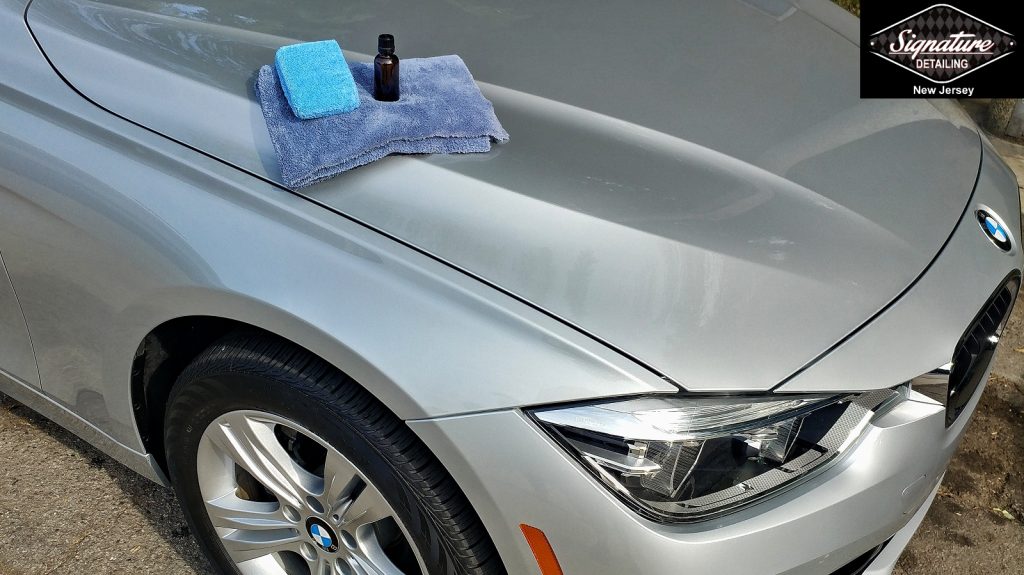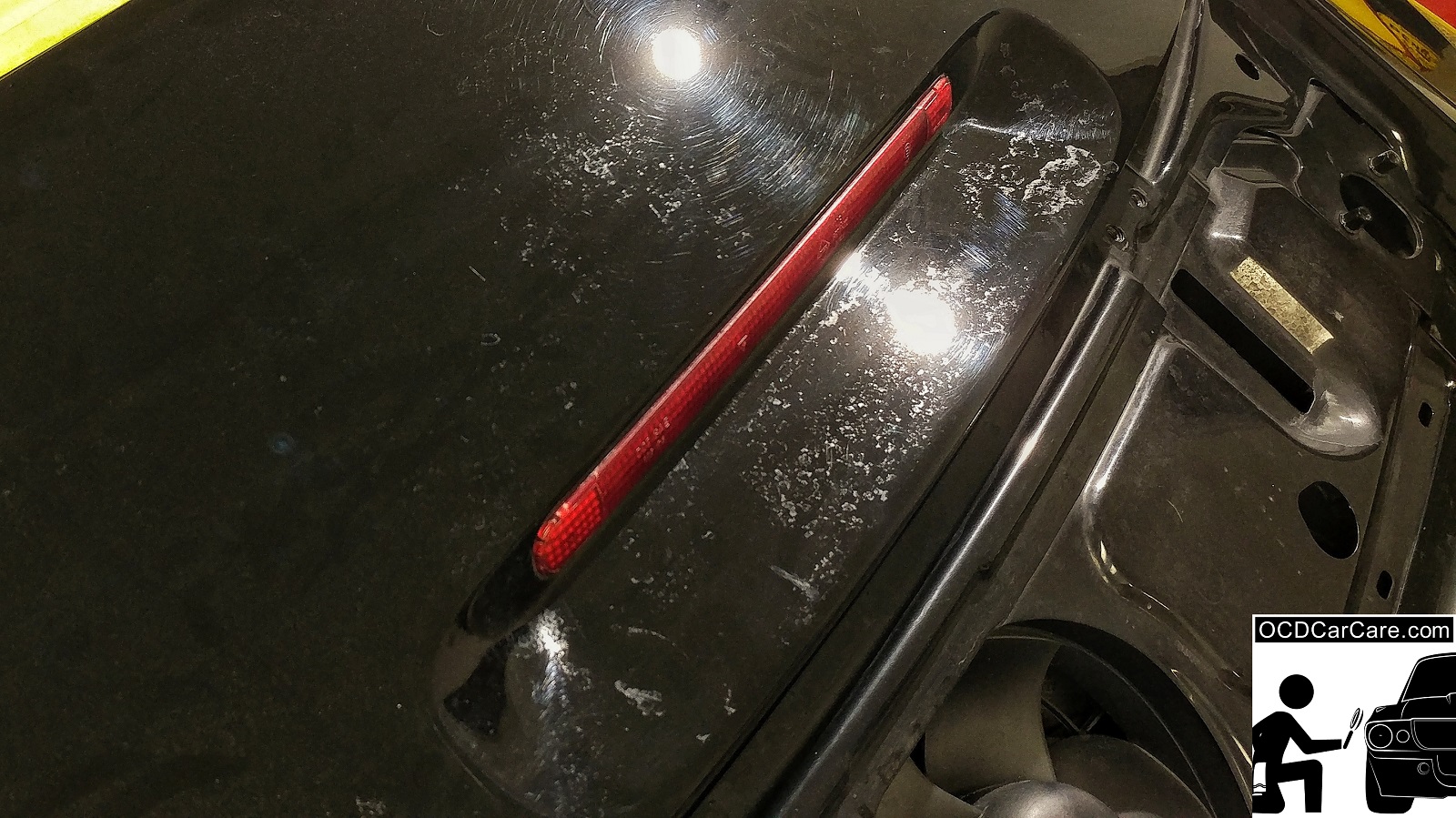Why Ceramic Finishing Is the Ultimate Solution for a Perfect End Up
Ceramic finishing has actually arised as a leading option for those looking for a remarkable finish for their vehicles, thanks to its amazing durability and safety attributes. This innovative fluid polymer not just bonds flawlessly with factory paint but additionally offers a formidable barrier against usual hazards such as scratches, UV rays, and environmental toxins. Its hydrophobic buildings streamline maintenance while enhancing visual appeal. Nevertheless, understanding how this technology compares to typical methods and discovering its application subtleties can expose even extra concerning its worth. What elements truly established ceramic layer apart?
What Is Ceramic Covering?

When applied appropriately, ceramic finishing develops a hydrophobic surface that wards off water and dust, making it simpler to maintain and clean. Unlike conventional waxes or sealants, which usually supply short-lived defense, ceramic finishings can last for numerous years, depending on the item quality and application method. The process of applying ceramic layer needs thorough preparation, including thorough cleansing and in some cases paint correction, to make sure ideal bonding and performance.
Ceramic coatings are not limited to vehicle surfaces; they can additionally be used on different products, including glass, metal, and plastics, giving a flexible service for improving defense. Generally, ceramic covering stands for a substantial improvement in surface area security innovation, incorporating both functional and visual advantages for a wide variety of applications.
Benefits of Ceramic Finishing
While many surface defense options exist, the advantages of ceramic covering attract attention because of its special buildings and durable performance. One of the key benefits is its outstanding resilience. Ceramic Coating Philadelphia. Unlike conventional wax or sealants that call for regular reapplication, ceramic finishings provide a durable layer that can last for a number of years, considerably lowering upkeep efforts
One more significant benefit is enhanced security against environmental contaminants. Ceramic coatings create a hydrophobic surface that wards off water, dust, and different toxins, making it simpler to cleanse. This function not only preserves the car's appearance yet also minimizes the threat of deterioration and oxidation, particularly in rough climate condition.
In addition, ceramic coatings use premium resistance to UV rays, stopping fading and deterioration of paint over time. This UV defense is important for maintaining the aesthetic value of automobiles and surface areas revealed to guide sunshine.
Furthermore, the shiny finish accomplished with ceramic layer improves the total visual allure, giving surfaces a showroom-quality sparkle. Overall, ceramic finishings stand for a substantial advancement in surface protection innovation, offering enduring advantages that satisfy both visual and functional needs.
How It Functions
Understanding the scientific research behind ceramic coverings discloses how they give such remarkable defense and longevity. At its core, a ceramic finishing is a fluid polymer that chemically bonds with the vehicle's factory paint. This bonding produces a safety layer that is both hydrophobic and oleophobic, repelling water, dust, and oil. The key component of the majority of ceramic finishes is silicon dioxide (SiO2), which is originated from quartz. This substance contributes to the layer's solidity and resistance to scrapes, UV rays, and environmental pollutants.
The application procedure entails several actions, consisting of surface preparation, which is important to accomplishing ideal bond. Once used, the layer undertakes a curing process, during which it hardens and forms a semi-permanent bond with the paint surface. This bond is what distinguishes ceramic finishes from traditional waxes and sealers, offering a longer-lasting protective obstacle that can endure for years.
Furthermore, the density of the covering can improve its safety top qualities, ensuring that it can hold up against harsh problems. Eventually, the scientific research of ceramic finishes combines advanced products with innovative application methods to provide an unparalleled level of protection and visual improvement for cars.
Contrast With Conventional Techniques
The benefits of ceramic layers end up being specifically apparent when contrasted to typical paint useful site security approaches such as waxes and sealants. While waxes provide a short-term luster, typically lasting a few weeks to a couple of months, ceramic coverings give a resilient safety layer that can sustain for several years. This resilience dramatically minimizes the regularity of reapplication, making ceramic coatings a more cost-effective service in time.
Furthermore, typical methods often require considerable prep work and several applications to achieve an adequate degree of protection. In comparison, ceramic finishes bond at a molecular level with the automobile's surface area, developing a durable guard versus environmental impurities like UV rays, acid rainfall, and roadway salts. This bond improves the vehicle's resistance to scrapes and swirl marks, which are widespread with typical waxes and sealants.
Furthermore, the hydrophobic homes of ceramic coatings fend off water and dirt, bring about less complicated cleansing read the full info here and upkeep. On the other hand, wax and sealant-treated surfaces can attract crud, requiring more frequent washing - Ceramic Coating Philadelphia. In general, ceramic layers not just give premium protection yet additionally provide a more enduring and aesthetically attractive surface, establishing them as the preferred option for critical car proprietors
Application and Upkeep Tips

Making use of a foam applicator, use the finish in tiny areas, complying with the manufacturer's guidelines relating to thickness and overlap. Permit enough treating time between coats, usually 1 day, to ensure proper bonding. After application, it is critical to prevent exposure to water or harsh elements for at the very least a week to permit the finishing to completely cure.
Additionally, utilizing a ceramic upkeep spray can boost the layer's hydrophobic properties and durability. Normal evaluations for any type of indicators of wear will certainly assist keep the layer's honesty and preserve that pristine finish.
Conclusion
In verdict, ceramic finish arises as a premium choice for attaining a flawless automotive coating. By creating a robust bond with factory paint, ceramic finish successfully shields versus scratches, UV rays, and ecological impurities.

Comments on “Long-Term Outcomes with Specialist Ceramic Coating Philadelphia Applications”